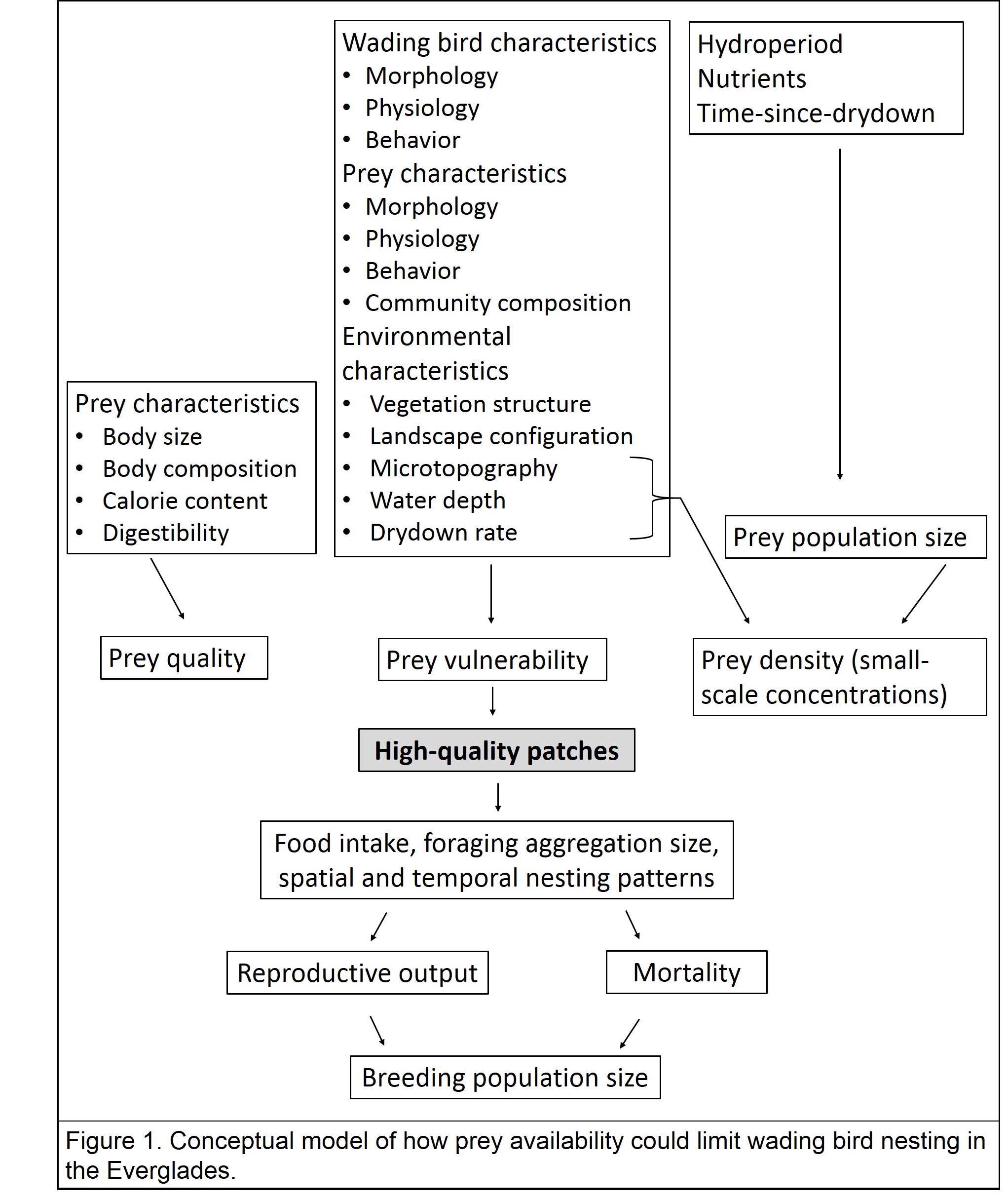 Statement of the Issue
Statement of the Issue

One of the primary hypotheses underlying the Everglades restoration is that there is a strong linkage among hydrologic patterns, fish populations, and wading birds. The importance and strength of the linkage has been demonstrated in field studies (Kahl 1964, Kushlan 1976), experiments (Gawlik 2002) and modeling (Fleming et al. 1994), and it is obvious from the repeated inclusion of these three ecosystem components in the conceptual models of the Monitoring and Assessment Plan (MAP) for the Comprehensive Everglades Restoration Plan (CERP). Knowledge of that linkage was used by scientists to set restoration targets as well as to develop monitoring tools for CERP.
Despite the evidence showing a link between fish populations and wading birds, the annual numbers of wading bird nests does not correlate with fish population size, making quantitative predictions of wading bird responses for CERP highly uncertain. Increased time since drydowns produce larger fish populations with larger body sizes, however, wading bird nesting effort tends to be highest following droughts ( Frederick and Ogden 2001) when fish populations are lowest (Loftus and Eklund 1994, Trexler et al. 2002) and individuals are smallest. If hydrologic patterns, fish population size, and wading birds are indeed linked, then the relationship is clearly not linear and other factors must mediate it under certain conditions.
Gawlik (2002) proposed a conceptual model with a list of potential factors that could modify the effect of prey density on wading birds (Fig. 1). The model depicts how factors that affect regional prey populations might only partly affect the
availability of prey
for wading birds, which is the variable to which birds respond.
Although people commonly use the terms food or prey “availability” and “density” interchangeably, the terms are quite different (Morrison et al. 1992). It is possible that factors affecting the concentration of prey could overwhelm factors that produce large prey population sizes (Gawlik 2002), thus producing a periodic disconnect between wading bird nesting and prey population size. Beyond the conceptual stage, there are few quantitative data on factors that affect prey concentrations because prey monitoring typically ceases when water dries to the point that travel by airboat is impeded. This project fills this information void by monitoring the spatial and temporal distribution of maximum prey densities across the landscape. The terms "maximum prey density" or “prey concentrations” represent the fish and macroinvertebrate (i.e., the crayfish, apple snail, and grass shrimp) concentrations in isolated patches of water during the drydown.